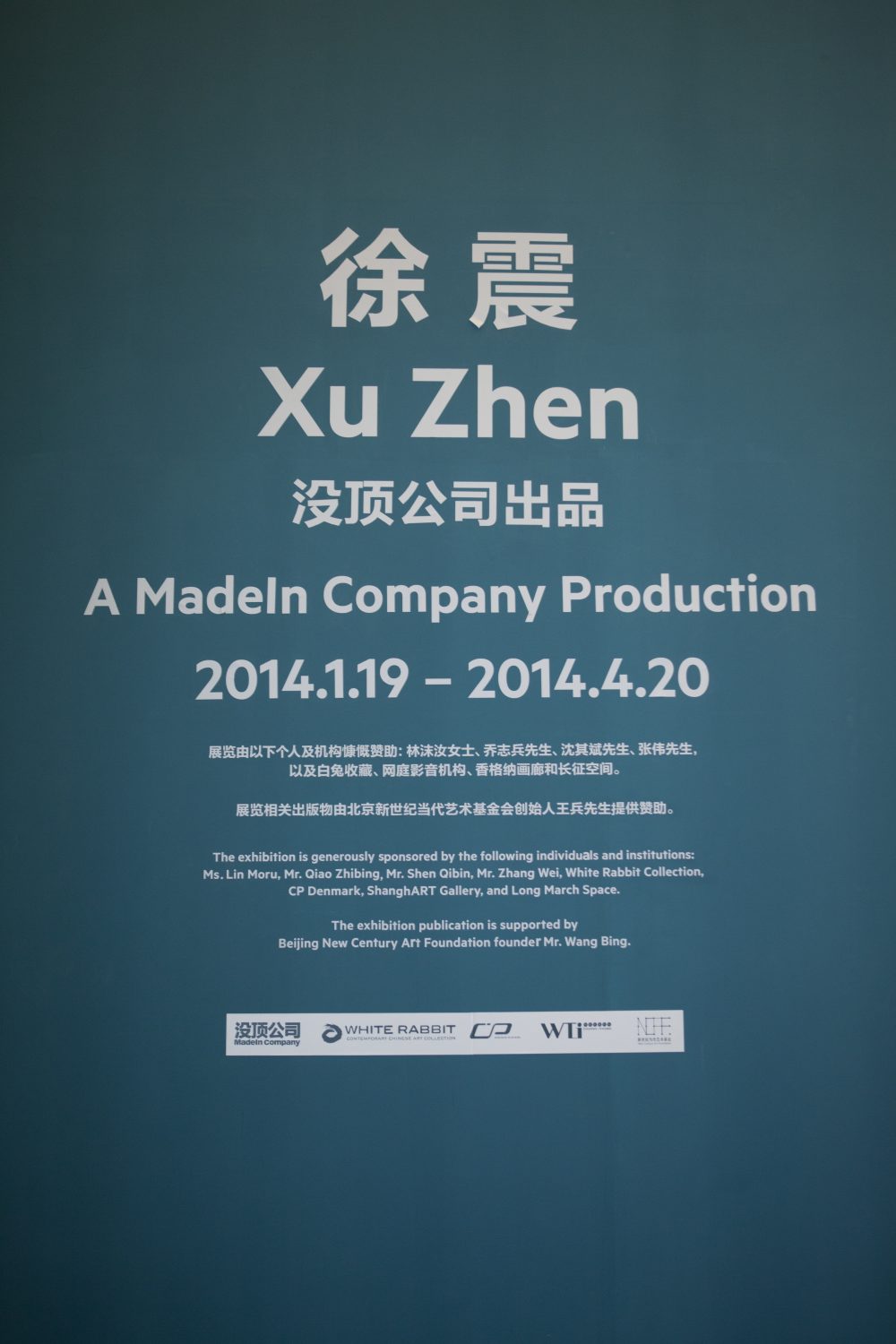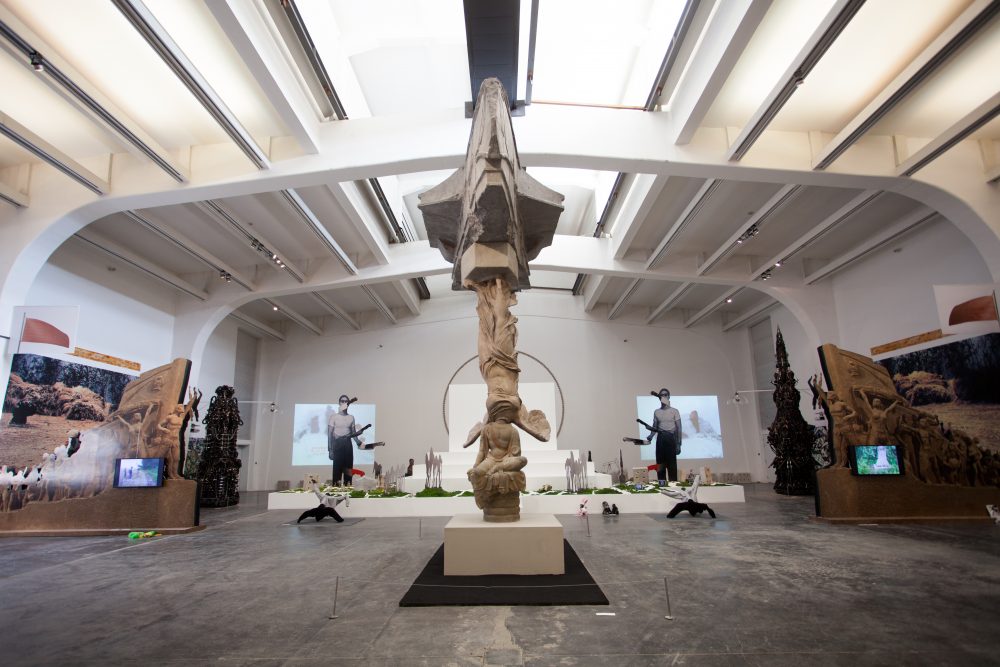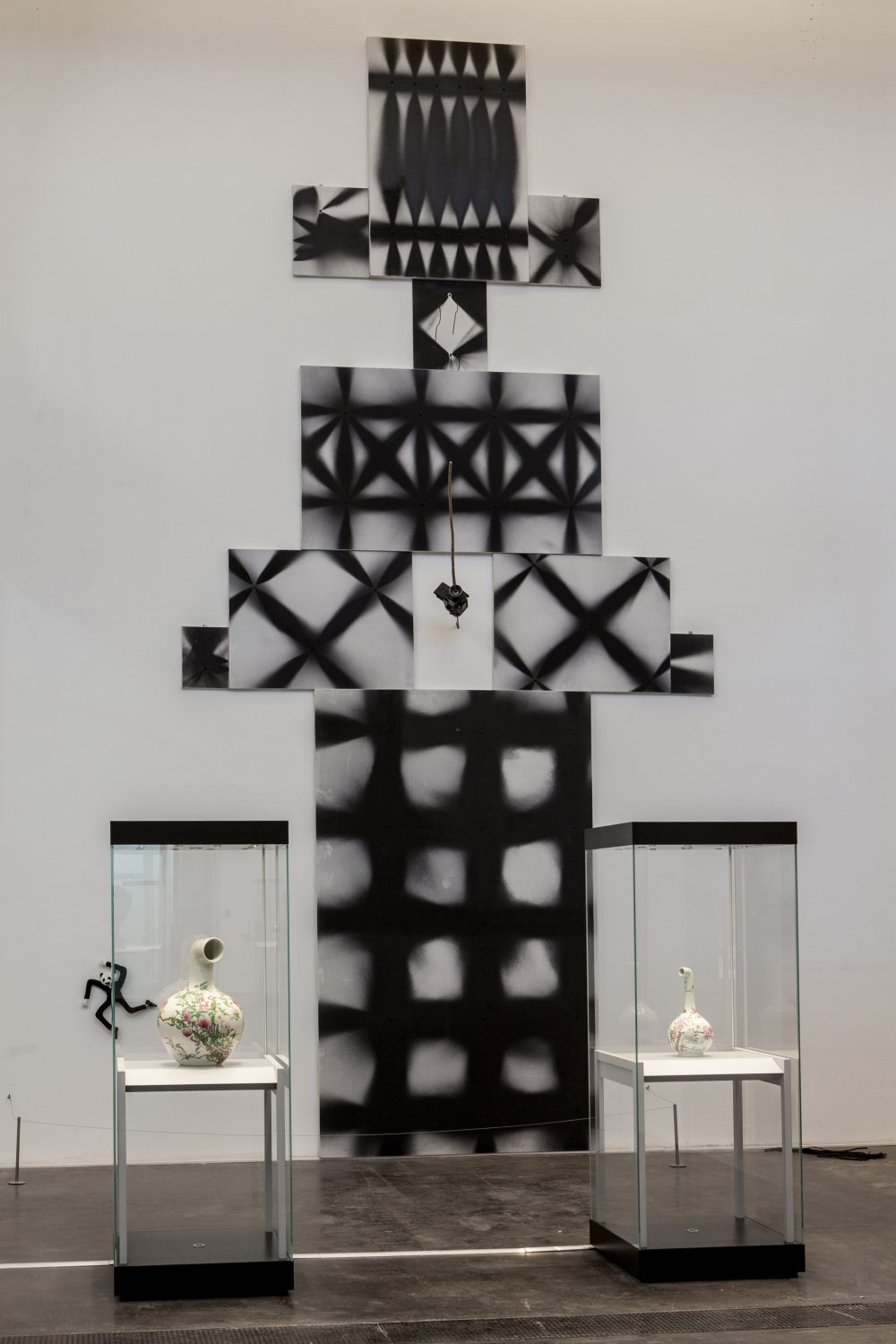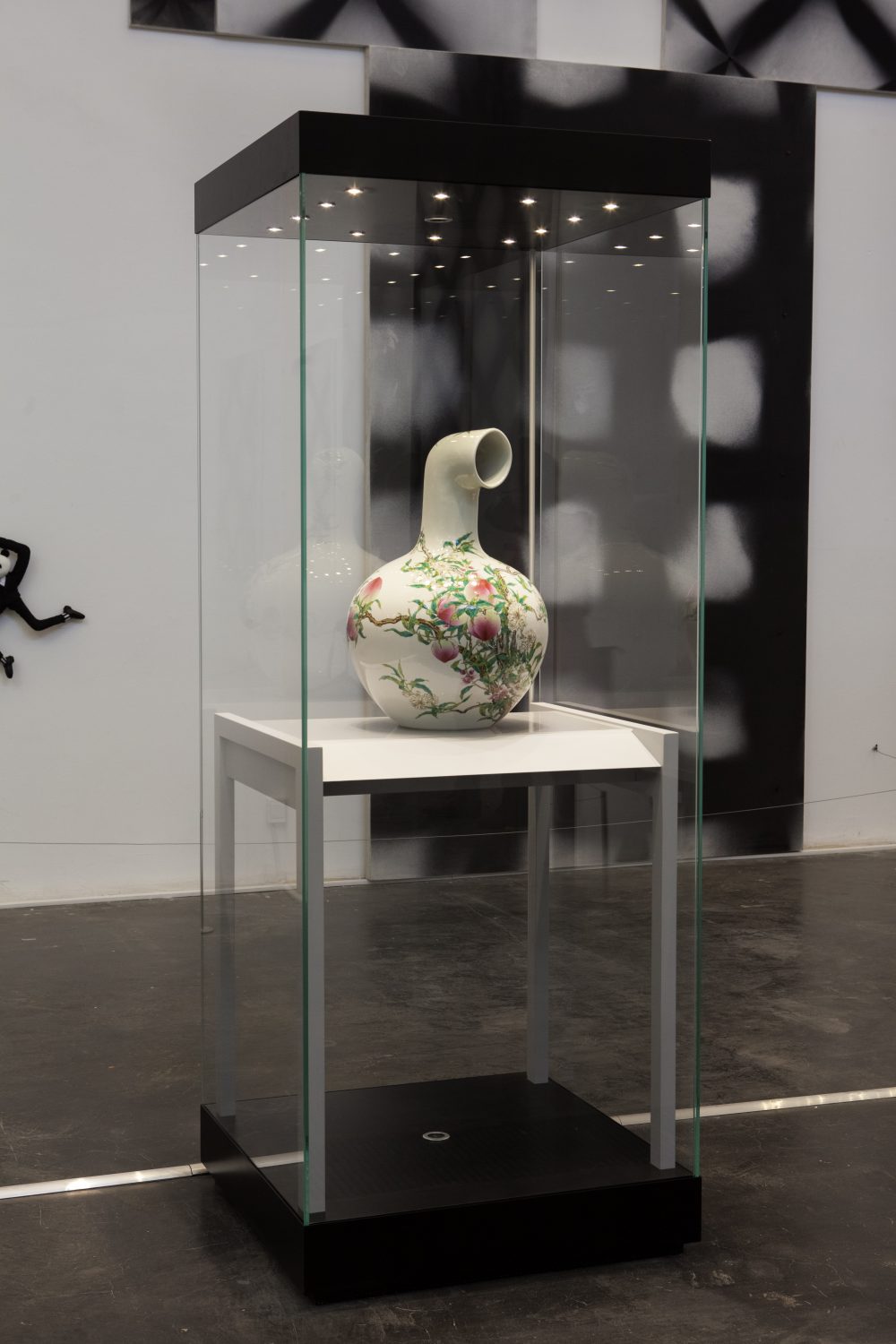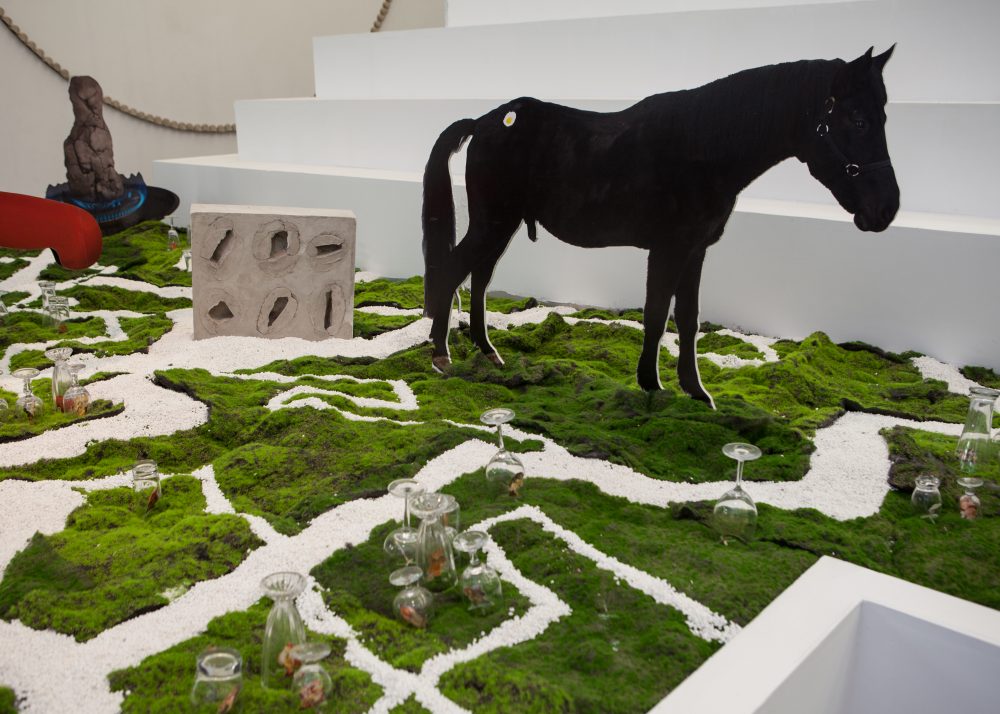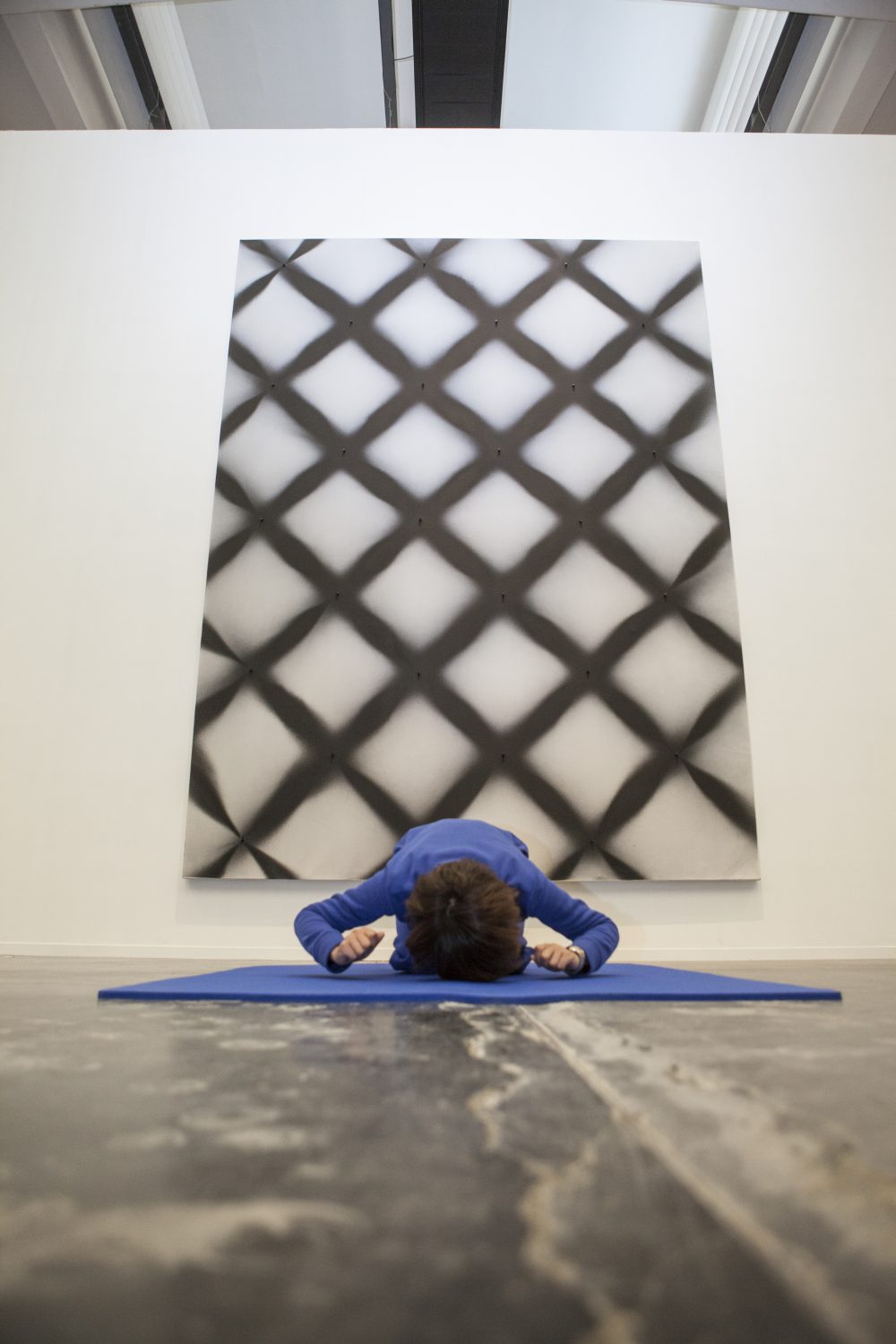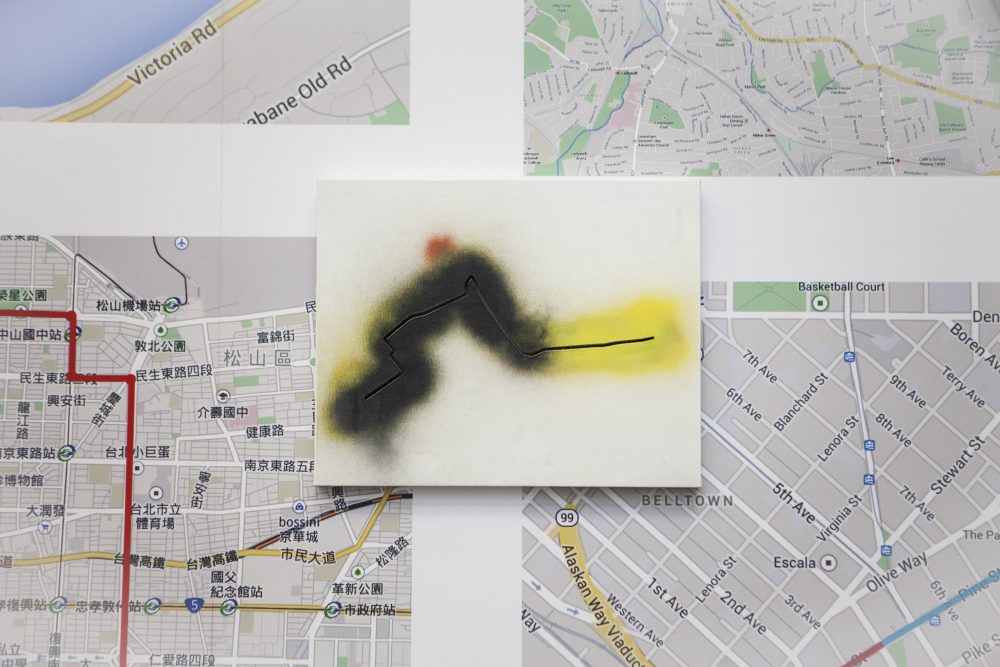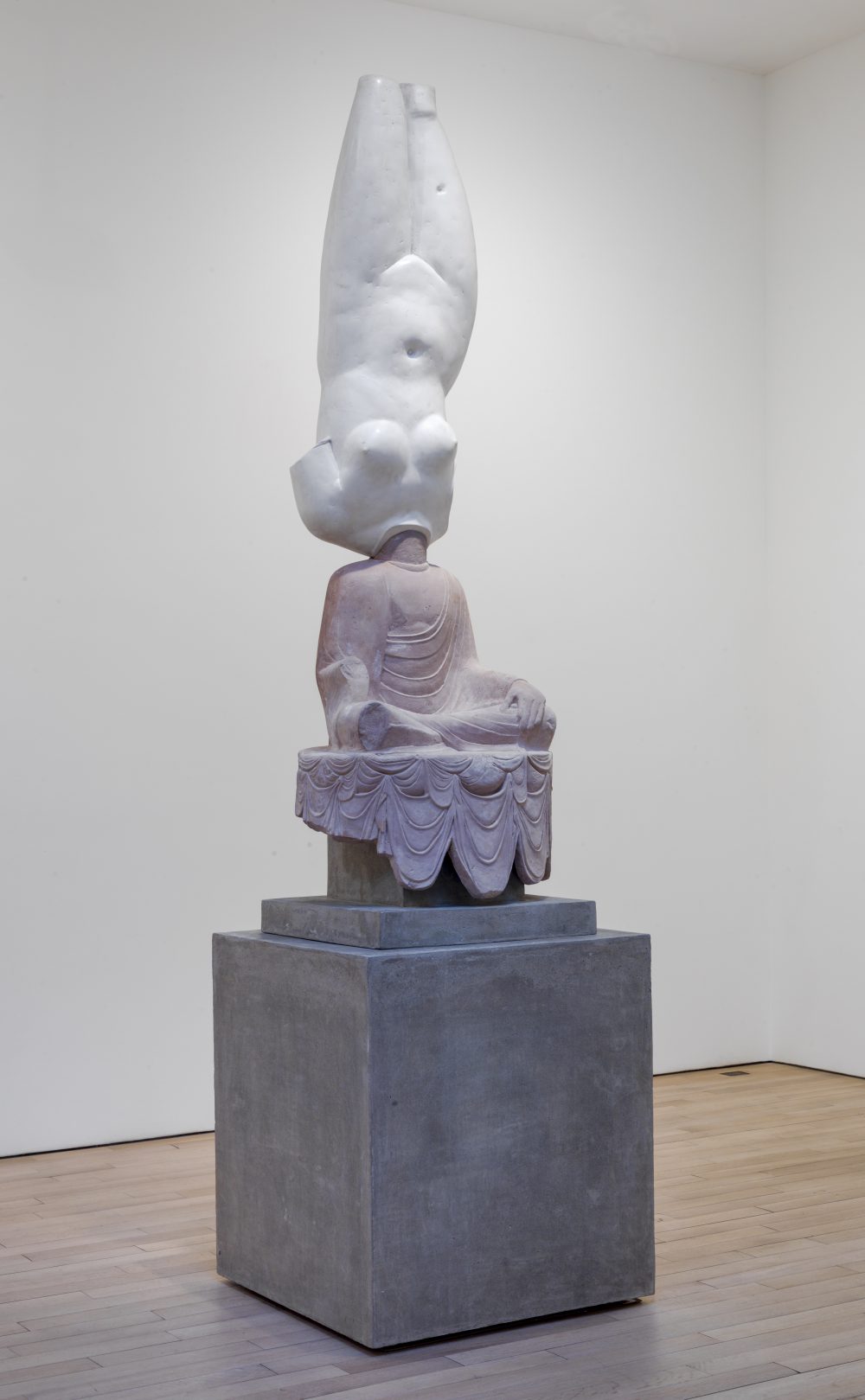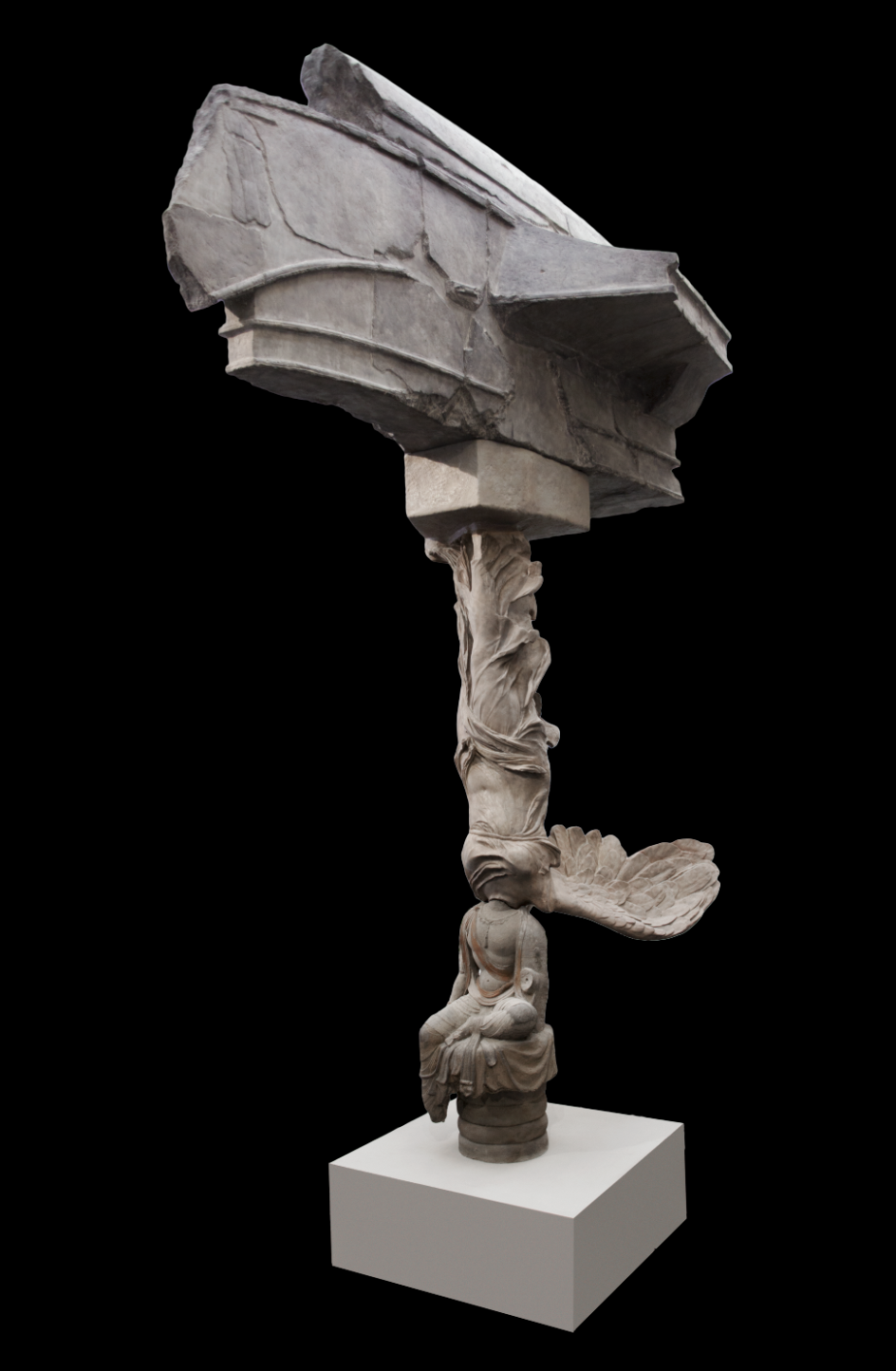-
2014.01.18-2014.04.20
Ullens Center for Contemporary Art, Beijing, ChinaA major mid-career retrospective explores the protean Shanghai artist’s interest in geopolitical subjectivity and the conditions of (Chinese) contemporary art
UCCA is proud to announce a major mid-career survey of mercurial Chinese artist Xu Zhen (b. 1977, Shanghai), one of the most interesting and promising artists working in China today. A daring artist with a voracious appetite for global information and a unique ability to produce work across multiple platforms and media, Xu Zhen is a key figure in the Shanghai art scene and a foundational figure for the generations of Chinese artists born since 1980. The exhibition is curated by UCCA Director Philip Tinari and UCCA Chief Curator Paula Tsai.
Xu Zhen’s practice incorporates a wide range of media, including painting, sculpture, mechanical installation, video, photography, and performance, often within a single piece. “Xu Zhen: A MadeIn Company Production” comprises a similarly diverse set of works, with over 30 installation pieces, 10 videos, 20 painting works, and several performances, filling UCCA’s signature Great Hall. The exhibition spans Xu Zhen’s early works made in his own name beginning in 1997, works made under the moniker MadeIn Company between 2009 and 2013, as well as significant new pieces produced specially for this exhibition under MadeIn Company’s “Xu Zhen” brand.
The title “Xu Zhen: A MadeIn Company Production” acknowledges the longstanding relationship between the artist’s individual practice and his sprawling involvement with the Shanghai contemporary art scene. In 2009, Xu Zhen dissolved his art practice into the “contemporary art creation company” MadeIn Company. Acting as the group’s CEO, Xu Zhen continues to undertake creative projects, artworks, and exhibitions under this revised mantle. MadeIn encapsulates Xu Zhen’s unique conflation of art practice, curatorial work, and art promotion that has defined his multifarious career in the Shanghai art scene. The artist’s withdrawal from his own name marks a rejection of the persona-driven contemporary art world while acknowledging that, since he first began working with art in 1997, Xu Zhen’s artwork has always been a collaborative effort.
Says Tinari, “Since the early 2000s, Xu Zhen, with his unique combination of skepticism and action, contemplation and involvement, has produced some of the most compelling and self-knowing art contemporary China has ever seen. We look forward to presenting his considerable output to audiences who might not yet be familiar with the arc of his career.”
A prankster provocateur in the vein of Yves Klein, Xu Zhen engages a variety issues with his characteristic wryness, from the politics of intercultural and international viewing in Lonely Miracle: Middle East Contemporary Art (a “group show” of works by fictional Middle Eastern artists), to voyeurism and ethical anxiety in depictions of race and suffering in The Starving of Sudan (an in-gallery tableau recreating Kevin Carter’s iconic 1994 photograph of a starving infant), to satire of de rigeur contemporary art practices in 8848-1.86 (wherein the artist “removes” a chunk of Mount Everest equivalent to his own height from the summit and brings it back for display in the museum). Presented together, Xu Zhen’s oeuvre reflects the lingering concerns of an artist participating in the international art world while remaining deeply skeptical of it and its conventions, most immediately the label “Chinese contemporary art.” Xu Zhen’s artworks probe the various mediations that corrupt the viewer’s experience of an artwork, particularly in observing a culture that is not one’s own.
“Xu Zhen: A MadeIn Company Production” includes a number of Xu Zhen’s landmark works. His 2001 video Scream, in which the artist lets out pained shouts on crowded city streets, only to capture the sequential shock and dismissal of hundreds of passers-by, made him the youngest Chinese artist to date to be included in the Venice Biennale. His 2007 installation Shanghart Supermarket, which takes the shape of a Shanghai convenience store fully stocked with packaging that has been emptied of content, sold for the price of the putative objects, was widely debated when it debuted at Art Basel Miami Beach at the height of the last art-market bubble. In Physique of Consciousness Museum, Xu Zhen uses a set of formal criteria to array archaeological and ethnographic artifacts—actually just mounted photographs of the same—without respect to place or time of origin.
In a major new commission for the lobby, Xu Zhen literally and winkingly juxtaposes East and West—that operative cliché of so much art in China—by mounting replicas of key Hellenistic and Buddhist sculptures head to head.
The UCCA exhibition is realized in collaboration with MadeIn Company and with the support of [XU ZHEN SPONSOR INFORMATION HERE]. It is accompanied by an eponymous catalogue which will mark the first comprehensive monograph on the artist’s work, with essays by Philip Tinari and Lu Mingjun. The exhibition will coincide with The Armory Show 2014 (March 5-9), for which Xu Zhen has been appointed the Commissioned Artist as part of the “Armory Focus: China” section which Tinari has curated.
